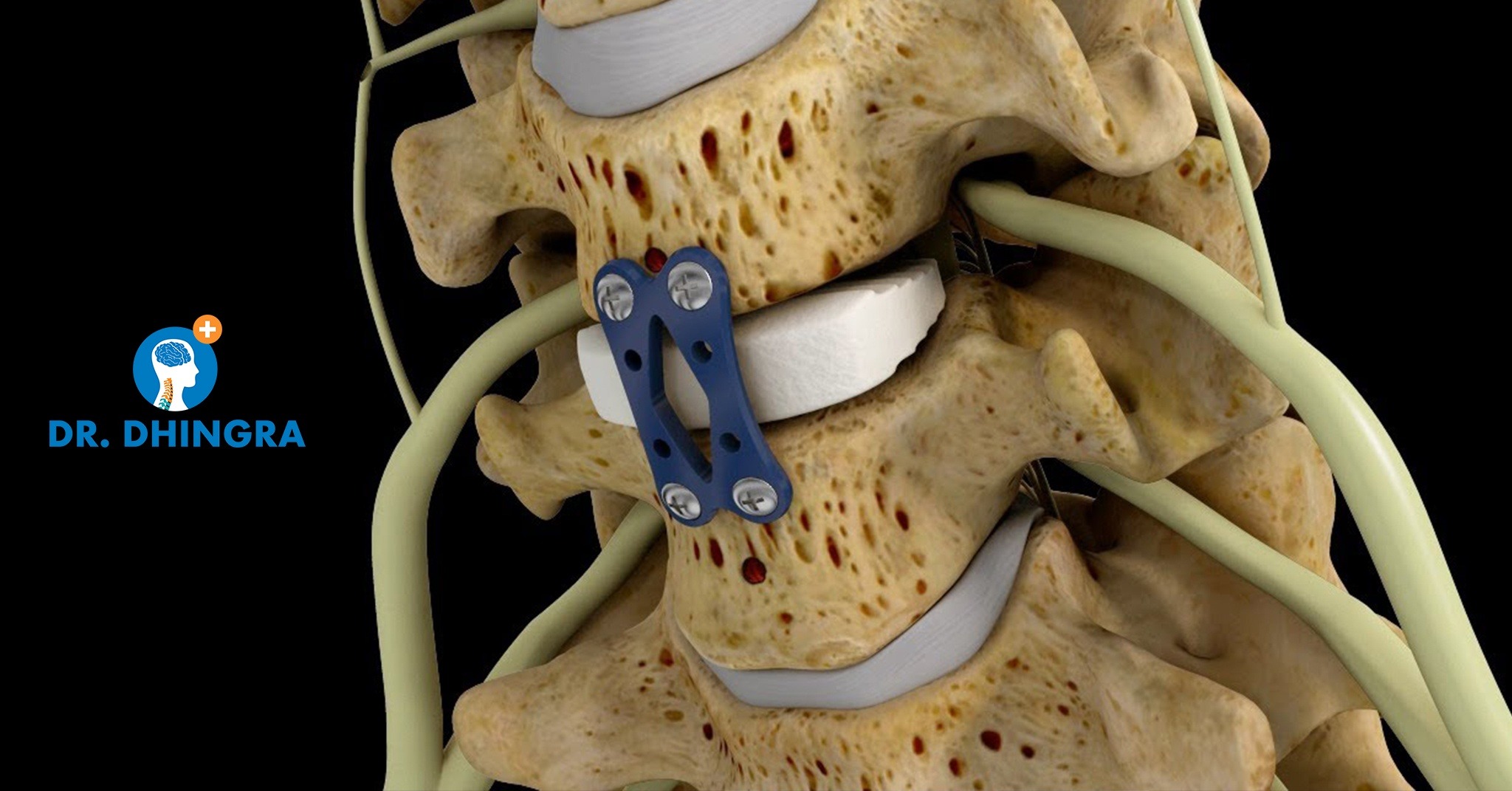
Cervical Fusion – Causes and Types of the Procedure
For the relief from the painful symptoms caused by cervical spine disorders, many times surgery is required. Dehydration of disks is one of the most common underlying root causes of most spine disorders. As people age beyond 30, the gelatine-like centres dry out and become flattened. This results in the vertebrae losing its height and the healthy resilience it had. Subsequently, this degeneration pushes the vertebrae closer and causes nerve irritation, which usually stems from a ruptured disc, bone spurs, or stenosis.
Dr Anil Dhingra, the best endoscopic spine surgeon, discusses cervical spinal fusion which is a surgery that joins selected bones in the neck (cervical spine)
Types of Cervical Fusion
There are two types of cervical fusion procedures: anterior cervical fusion, and posterior cervical fusion.
Anterior Cervical Fusion
One of the most common surgical procedures for problems in the cervical spine is Anterior cervical discectomy. The word ‘discectomy’ refers to “remove the disc.” This is a procedure that is used to relieve pressure on a spinal nerve or the spinal cord that is caused by a herniated disc.
In this procedure, the disc is usually removed from the front of your cervical spine. An incision is made in the front of your neck beside your trachea (windpipe). The muscles are moved to the side. The arteries and nerves in your neck are also protected. Upon reaching the front of your spine, your doctor will use an X-ray to identify the problem disc. This disc is removed all the way back to your spinal cord. If any bone spurs are found sticking off the back of the vertebrae and your doctor thinks they may also be causing you pain, they may be removed at the time of surgery.
Posterior Cervical Fusion
Posterior cervical fusion is done through the back of your neck. A bone graft is placed on the back surface of the problem vertebrae. As the healing process begins, the vertebrae grow together creating a solid piece of bone. This type of fusion is used in the cervical spine for fractures and dislocations. It is also used to correct deformities in your neck.
Dr Anil Dhingra, the top neurosurgeon in Chandigarh,wants to ensure patients are aware of the possible treatments available for the symptoms they are facing.
